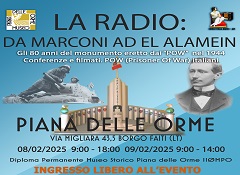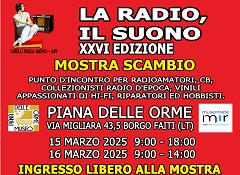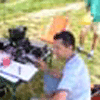Nepal Earthquake - Update 1 May 2015
Friday, 01 May 2015 18:33
Written by Greg Mossop
In all disasters there is a sad shift from search and rescue activities to one of recovery. In Nepal this transition is beginning with no further Search and Rescue or Medical teams being required to enter the country and those who are in already reaching the end of their normal planned 10 day period in the area. The situation in Nepal remains difficult but as international resources have been deployed, such as extra equipment from the ITU and the power situation in the country improving then the telecommunications needs change.
An example of this is the closure of the nets on 20m which had been focused on Kathmandu Radio Amateur Satish Kharel 9N1AA today. The situation having improved enough for him to have been interviewed in TV in the USA via a Skype Link ( Video available here ).
Other radio amateurs from India, China and Turkey amongst other countries remain in Nepal until their deployments end and the public communications systems are improving with efforts by the Nepal Police and other agencies to deploy solar chargers so the public can start using their mobile phones again.
The Nepalese authorities are reported to be offering licenses to visiting Radio Amateurs but they are taking a little time to process and the operators are given a specific Nepal callsign and are not allowed to use their home callsigns.
Dr Sanjeeb Panday 9N1SP has also been operating throughout the emergency following the protocols set in previous exercises with the MARS organisation in the Unites States and these operations have included the use of SSTV to pass pictures back to the US to assist the disaster response. Dr Panday's operations continue to the best of our knowledge.
Any further missing person enquiries should be submitted via the Red Cross at;
http://familylinks.icrc.org/nepal-earthquake/en/pages/home.aspx
This disaster has generated a large amount of positive publicity for amateur radio externally and hopefully interested more Radio Amateurs in preparedness and participation in Emergency Communications Programmes. The IARU Emergency Centre of Activity Frequencies have also been extensively used which is another positive feature.
More information may be found in the IARU Emergency Telecommunications Guide at http://www.iaru.org/emergency-telecommunications-guide.html or via your IARU Regional Emergency Communications Co-Ordinator
Written by Greg Mossop
In all disasters there is a sad shift from search and rescue activities to one of recovery. In Nepal this transition is beginning with no further Search and Rescue or Medical teams being required to enter the country and those who are in already reaching the end of their normal planned 10 day period in the area. The situation in Nepal remains difficult but as international resources have been deployed, such as extra equipment from the ITU and the power situation in the country improving then the telecommunications needs change.
An example of this is the closure of the nets on 20m which had been focused on Kathmandu Radio Amateur Satish Kharel 9N1AA today. The situation having improved enough for him to have been interviewed in TV in the USA via a Skype Link ( Video available here ).
Other radio amateurs from India, China and Turkey amongst other countries remain in Nepal until their deployments end and the public communications systems are improving with efforts by the Nepal Police and other agencies to deploy solar chargers so the public can start using their mobile phones again.
The Nepalese authorities are reported to be offering licenses to visiting Radio Amateurs but they are taking a little time to process and the operators are given a specific Nepal callsign and are not allowed to use their home callsigns.
Dr Sanjeeb Panday 9N1SP has also been operating throughout the emergency following the protocols set in previous exercises with the MARS organisation in the Unites States and these operations have included the use of SSTV to pass pictures back to the US to assist the disaster response. Dr Panday's operations continue to the best of our knowledge.
Any further missing person enquiries should be submitted via the Red Cross at;
http://familylinks.icrc.org/nepal-earthquake/en/pages/home.aspx
This disaster has generated a large amount of positive publicity for amateur radio externally and hopefully interested more Radio Amateurs in preparedness and participation in Emergency Communications Programmes. The IARU Emergency Centre of Activity Frequencies have also been extensively used which is another positive feature.
More information may be found in the IARU Emergency Telecommunications Guide at http://www.iaru.org/emergency-telecommunications-guide.html or via your IARU Regional Emergency Communications Co-Ordinator



 . . . . . . . . . . .
. . . . . . . . . . . 







